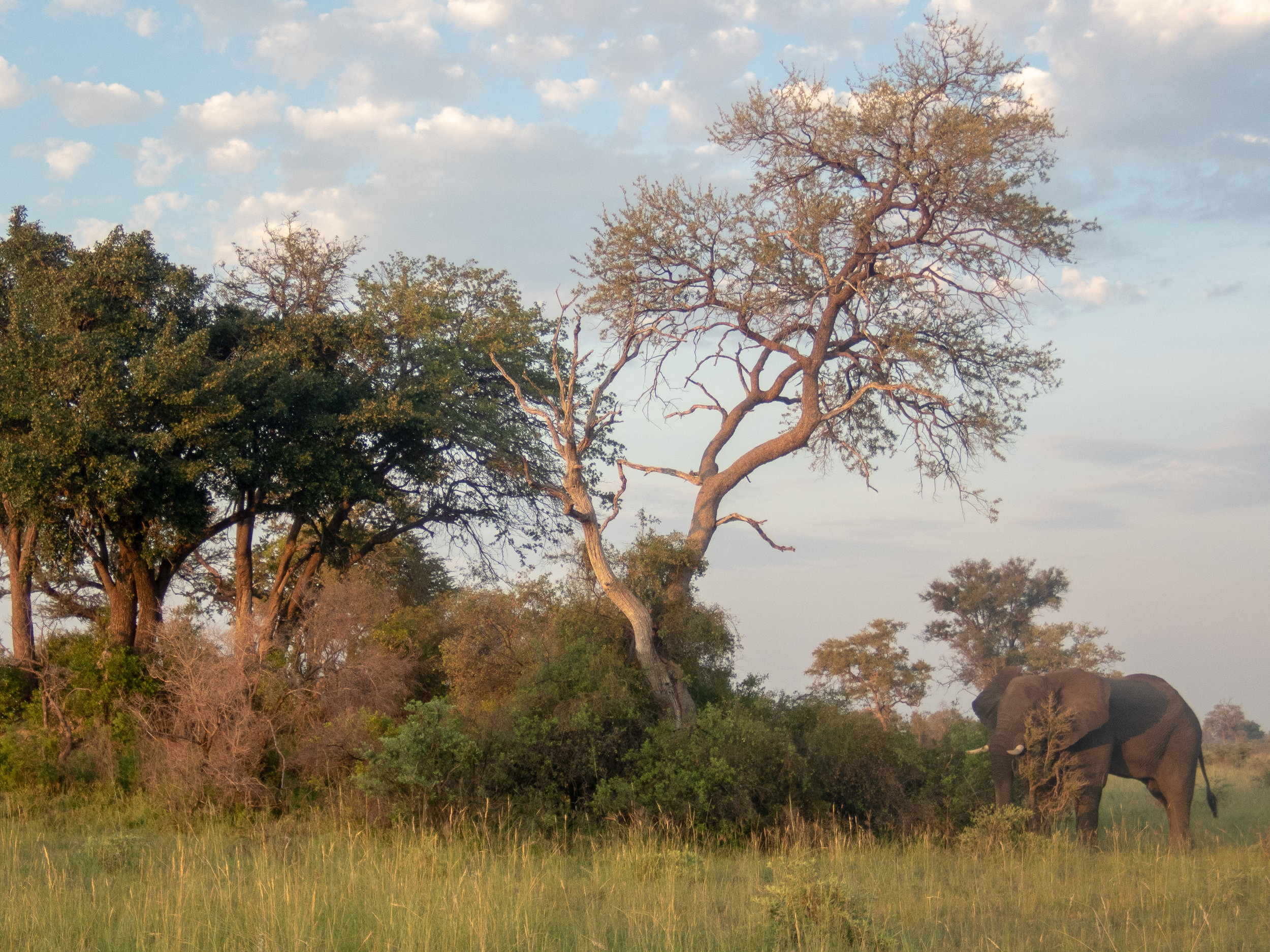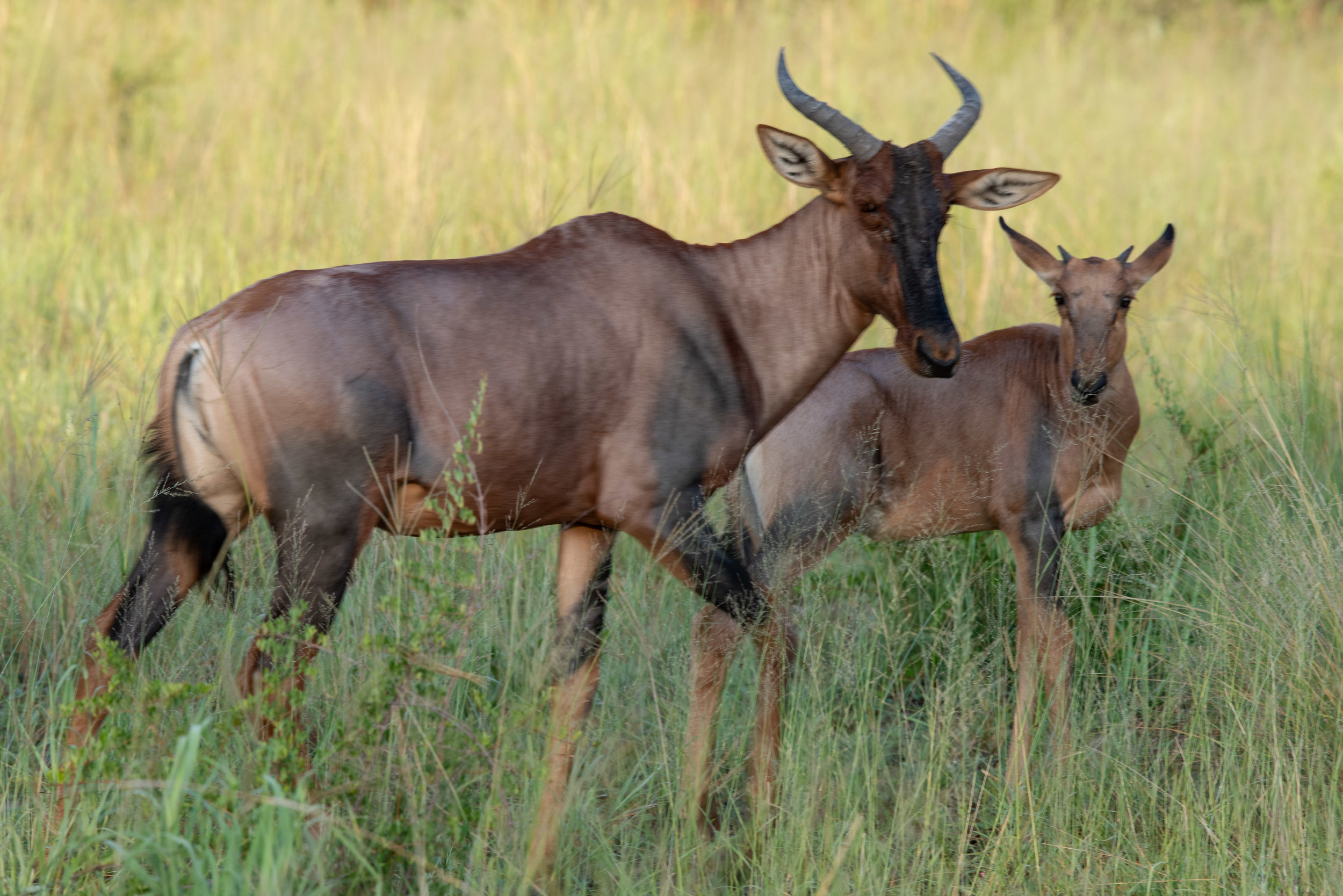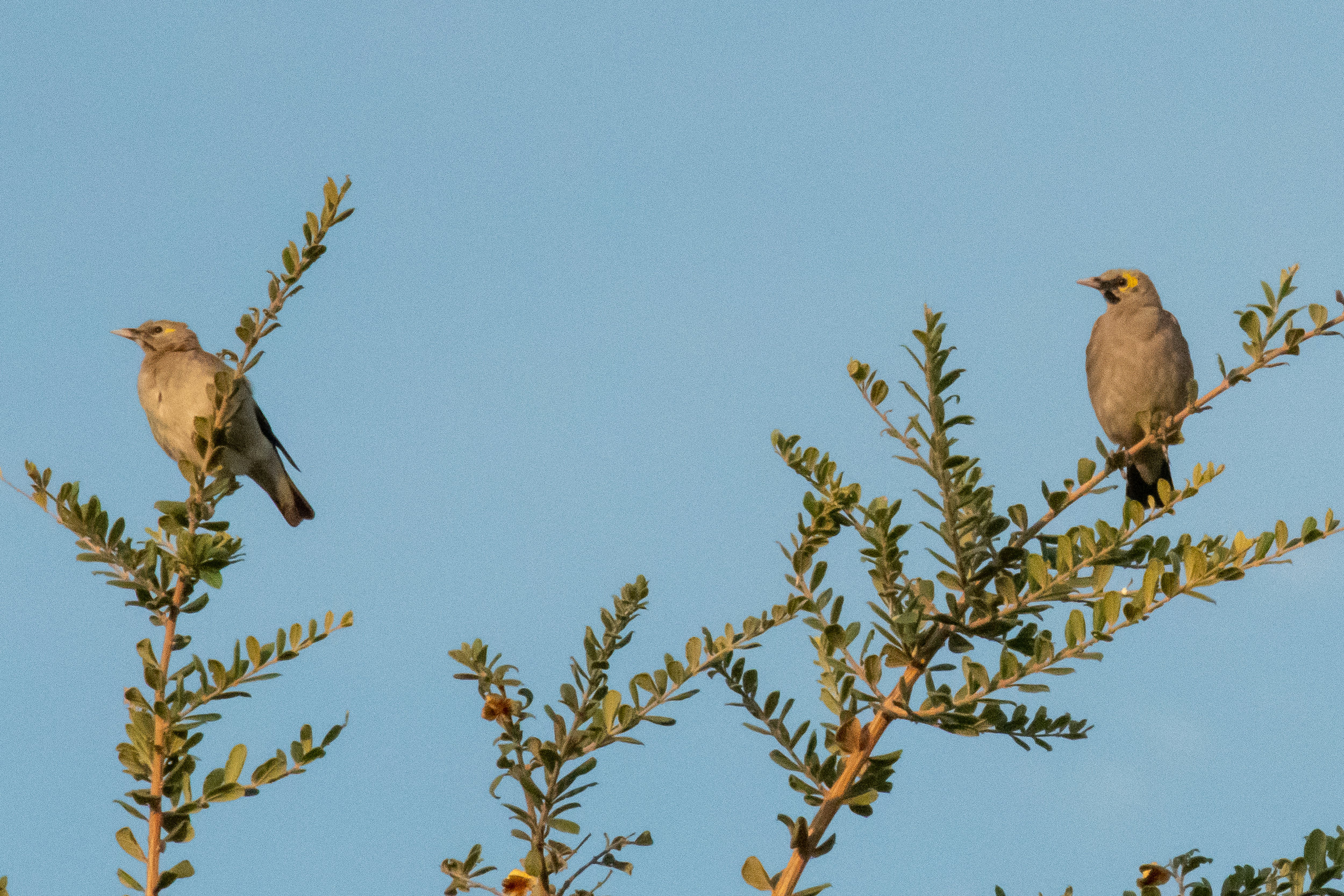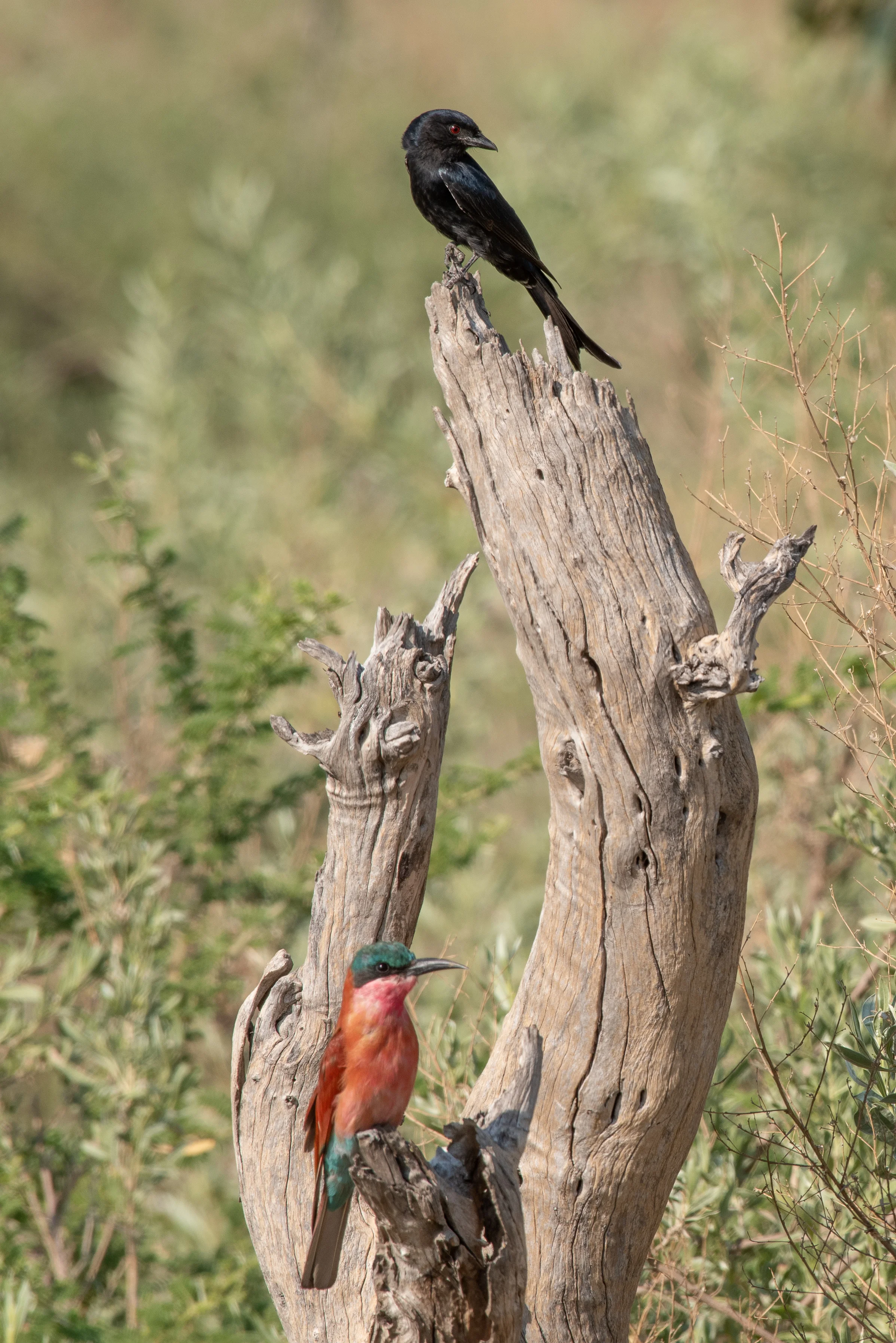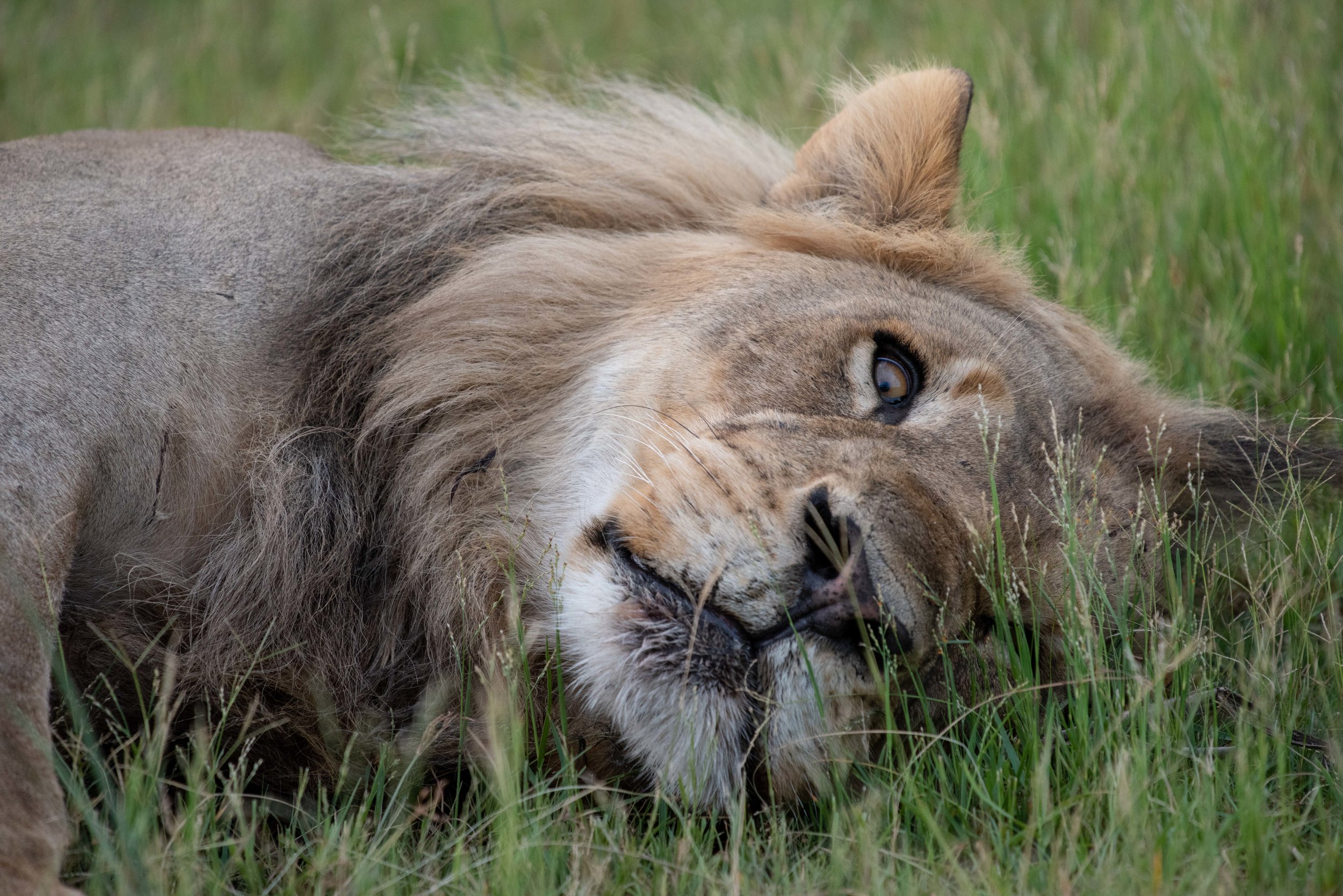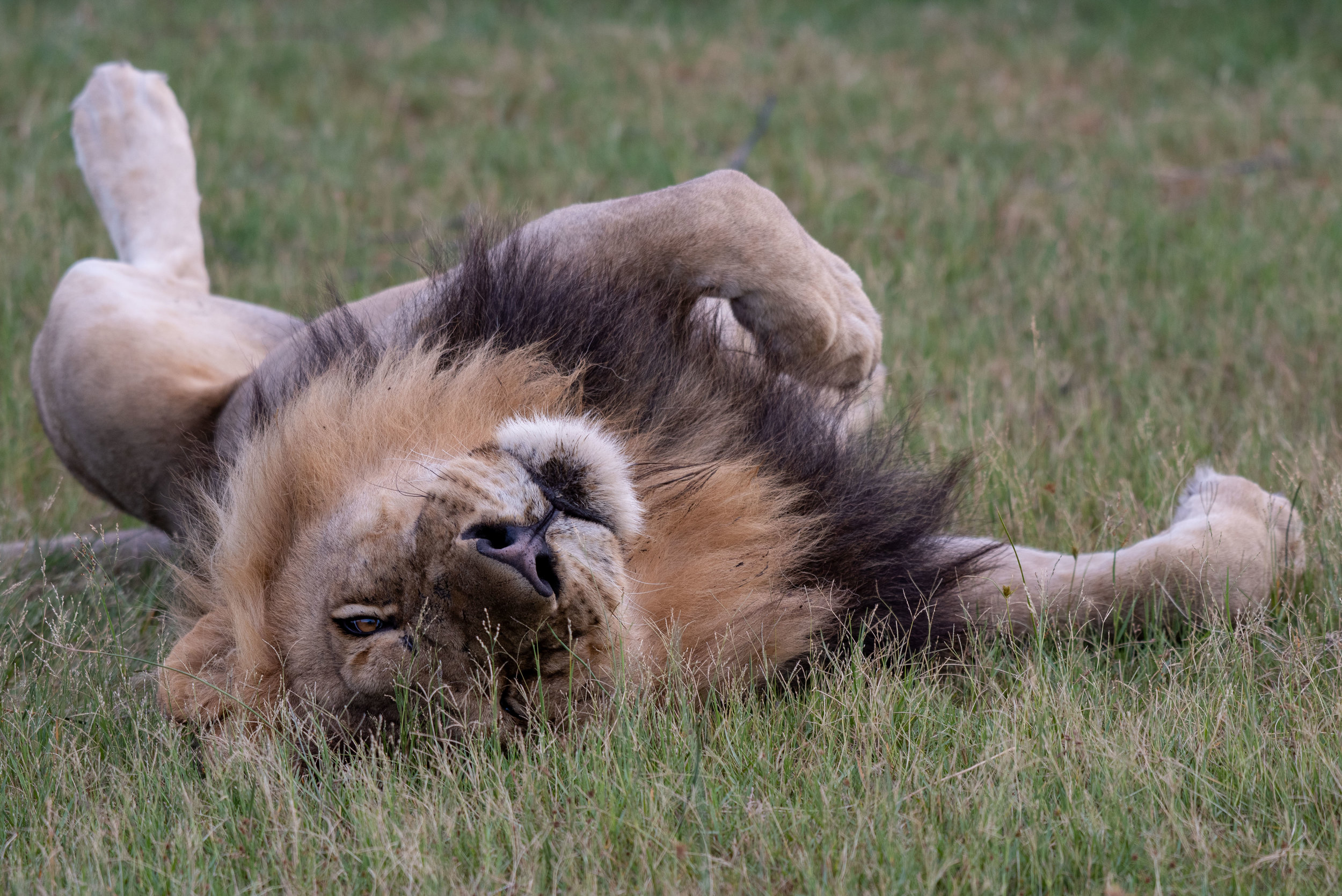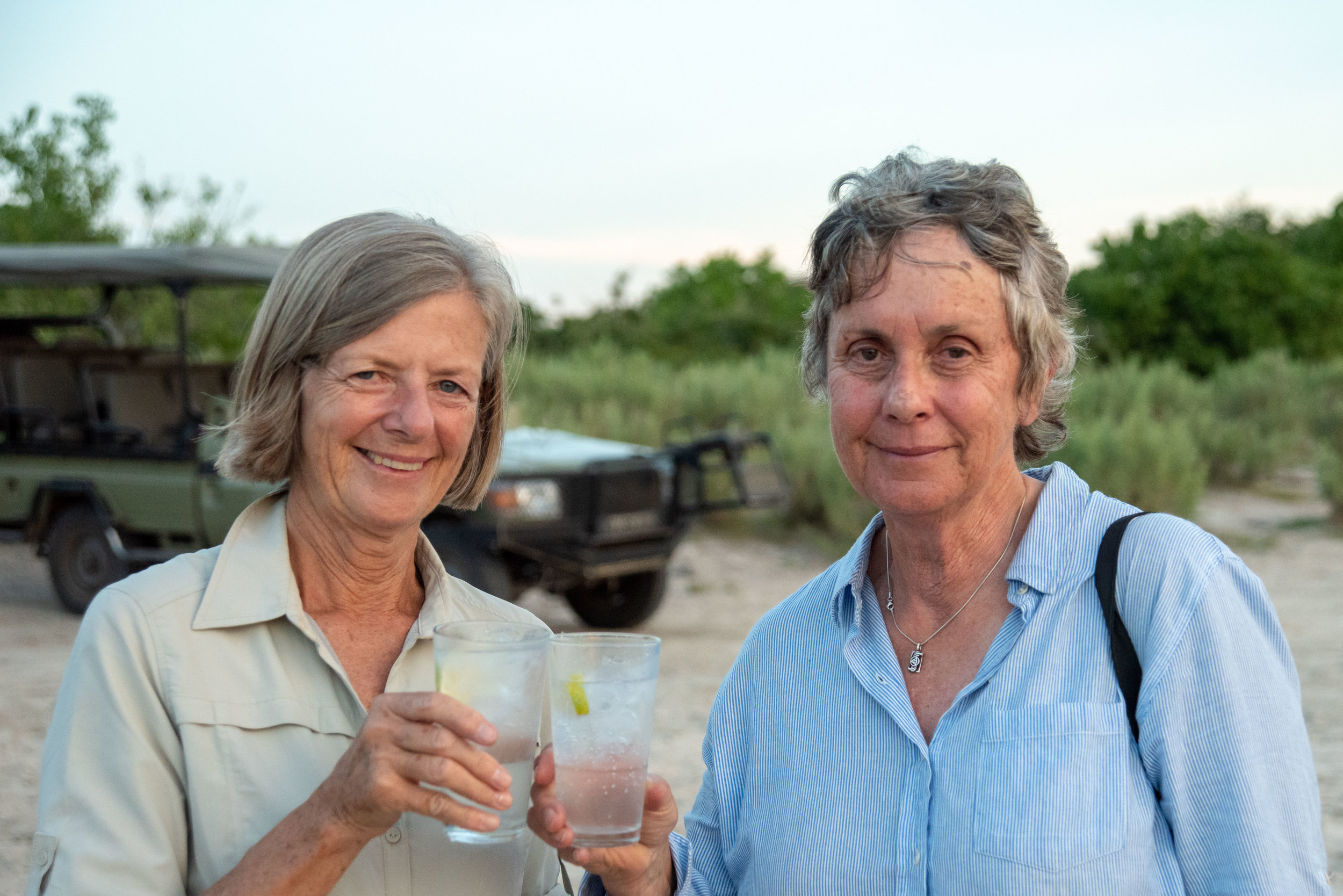One of the joys of a safari sunrise is to have the sun rising with a large animal such as an elephant, rhinoceros or giraffe silhouetted in the foreground.
Sunrise
We managed to obtain photos of the 06:32 sunrise with a very cooperative and large bull elephant which stood in the best possible position for us for about five minutes. A giraffe’s neck and head were then silhouetted just a few minutes later.
Elephant at sunrise
Elephant in early morning light
Elephant in early morning light
Elephant in early morning light
We watched a large herd (ballet) of impalas in the early morning light as they enjoyed their early morning graze. A few quite large calves were feeding from their mothers and we were surprised to learn that most calves are born in December and grow very quickly. This increases the survival rate within the herd as predation upon these animals is high. From some distance it is sometimes difficult to tell lechwe, reed bucks and impala apart but once close up there is no such problem. Impalas have a distinctive brown back, a pale coffee coloured mid and a white underbelly. Their dainty black ankle markings (socks) are associated with scent glands. When being chased they can run at 80 km/h and whilst doing so they kick their heels into the air and release a group identifiable pheromone from these ankle glands as a means helping to keep the herd together.
Burchell's zebras
Tsessebe & calf
Tsessebes
In the distance well away from the impalas on a sandy ridge our ‘spotter’ James sighted a lioness. We moved quietly to a spot about five metres from her and she showed disinterest in us. She was lying down and relaxing and appeared to be pregnant.
Lioness
Lioness
This lioness was quite senior as shown by her dark nose. We were informed that younger lions have a more pinkish coloured nose. The whisker pattern around the mouth can be used as a unique identifier for lions somewhat like fingerprints for us.
Lioness
We watched her for ten minutes and then she started moving with stealth towards a narrow gap in the bushes where we could see in the far distance a grazing herd of zebras and a number of impalas too.
So as not to interfere with her hunt we took a distant position to wait for the anticipated ‘kill’. We missed out on seeing any further action as we think the lioness had employed a different strategy from the one we’d predicted.
Potential meal for lioness
European roller
Wattled starlings (male & female)
European roller in flight
Within a few hundred metres were two more lions, these being young but mature males as shown by their black manes. They had obviously eaten quite recently as they had full bellies and were sleepy. The killing power of these magnificent cats was clearly evident when they yawned revealing massive incisors and when they rolled over the size of their shoulder muscles was beyond expectation. If one of us had left our seated positions in the truck, our guide said we’d have been killed within seconds!
Lion (male) resting in the shade
Lion (male) resting in the shade
Lion (male) resting in the shade
In a somewhat more sedate fashion, we watched four wattled lapwings perform a synchronised dance routine close by. When the choreography appeared to go wrong there was a noisy squabble and the birds flew off.
African wattled lapwings
African wattled lapwings
An African cuckoo was a new species for us and Corinne managed to get a great shot of the cuckoo in flight. It was also a first for us to see an immature carmine bee-eater. This young bird has quite dull plumage unlike the adult that is a magnificent magenta colour.
African cuckoo
Carmine bee-eater (juvenile)
African cuckoo in flight
Giraffe
Somewhat unexpectedly we came upon a large group of ostriches. The male leader was very large and dark black whereas the females and younger birds were more of a pale brown colour. The ostrich is the fastest of all animals that run on two legs. Their appearance seems a little strange to us as they have very long legs with the highly muscled thigh area being white and bare of feathers. The body is a spherical fluff ball and extending from this sphere of feathers is a tall periscopic and bare neck. The head and especially the eyes offer a quizzical appearance as if the bird is thinking that we’re the ones that are strange.
Common ostriches
Common ostriches
Spotter' Jak, 'Driver' Corinne
Our jeep
Immediately after a coffee/tea break we saw a Temminck’s stint which was another new sighting for us. This bird looks like the “road-runner” from the kids’ cartoon having brown body plumage with a rusty coloured crown and a black eye-stripe.
Temminck's stint
Meves starling
Carmine bee-eater & fork-tailed drongo
Then we watched a fork tailed drongo and a carmine bee-eater initially sharing the same dead tree. The drongo then pulled rank and forced the bee-eater off so as to take full ownership of this desired piece of real estate.
Black backed jackals were seen 100 m ahead but wouldn’t permit a much closer approach and soon went into hiding in the tall grass.
Black-backed jackal
On our return to camp we stopped at a large tree and watched the gymnastic antics of baboons as they leapt and climbed through the treetop.
After our brunch session we had to bid farewell to our new friends Terrie and Ed from Vancouver. In the three days we’ve all been together there’s been much fun and laughter and a warm friendship has developed. We’re hoping that we’ll catch up with them again as they were talking of a future return trip to Australia particularly to see Tasmania which they missed out on during their previous Aussie travels down-under.
During our siesta break, we decided to try our luck at getting better photos of the African paradise flycatcher which frequents the camp area. This beautiful bird with its blue head and orange body has a spectacularly long tail but moves quickly from tree to tree chasing insects. After half an hour of following this intriguing bird and taking numerous photos, we eventually succeeded in obtaining a few worthy of retention.
Whilst this hunt for the paradise flycatcher was occurring, we also managed to photograph a number of butterflies and other birds around the camp area. These included a willow warbler, an African golden weaver and a black collared barbit.
In the meantime, a large herd of elephants came down to the river’s edge adjacent to the camp to drink and bathe.
Baboon
Staff at Lagoon Camp
Staff in bar at Lagoon Camp
Butterfly
Butterfly
African paradise fly-catcher
Willow warbler
African golden weaver
Black-collared barbet
Elephants near Lagoon Camp
Our final afternoon safari in Botswana was to be a relaxed affair with time spent photographing elephants, birds and the general landscape.
Elephants near Lagoon Camp
Elephant near Lagoon Camp
Magpie shrike
Red-billed buffalo weaver
Swainson's spurfowl
Red-crested korhaan
Marabou stork
Ruff
Marabou stork
Black-winged stilt
We then returned to where the two male lions had been found sleeping this morning. They were close to the earlier found location but were still looking drowsy.
We established a position quite near the lions and observed their behaviour for ten minutes or so.
The lions yawned, rolled over, stretched and sometimes stood up for a short period before returning to their preferred somnolent state.
Lion
Lions
Lion
Lion
A delightful occurrence was when the younger lion moved over to snuggle up next to his relative (half-brother or cousin) and rub heads together showing clearly that they were ‘blood brothers’.
Lions
Lions
We then moved only a hundred metres away from the lions to focus on the water bird activity occurring on the small nearby lake.
Water birds on lake
There were numerous aquatic bird species in action hunting and feeding from the shallow waters.
Amongst the many birds present were stilts, herons, egrets, storks, kingfishers, teals, lapwings, ruffs and three banded plovers.
Black heron
Blacksmith lapwing
Three-banded plover
Grey heron
Ruff
Red-billed teals
With the late evening sun, we managed to get photos of the birds in a soft pink lighting and often they were positioned enabling us to get interesting reflections too.
Yellow-billed stork
Yellow-billed storks
Our 18:20 sundowner’s experience turned out to be a party with the two other tourist groups on the edge of one of the salt-lakes.
Staff preparing sundowners
Corinne & Rae
Malcolm & Jak
Sundowners at Kwando Lagoon, group photo (Photo credit Nancy Ronan)
The resort had arranged prior to our arrival for their staff to come out and set up a table with a white tablecloth and to make a cocktail bar with drinks and food on offer. In a fiery red sunset this was a magic ending to our Botswanan experience.
Pre-dinner drinks around the fire at Kwando Lagoon Camp
Staff performing for us at Kwando Lagoon Camp
It’s all been totally inspiring and we feel so lucky to have been able to participate in this magic African holiday!



